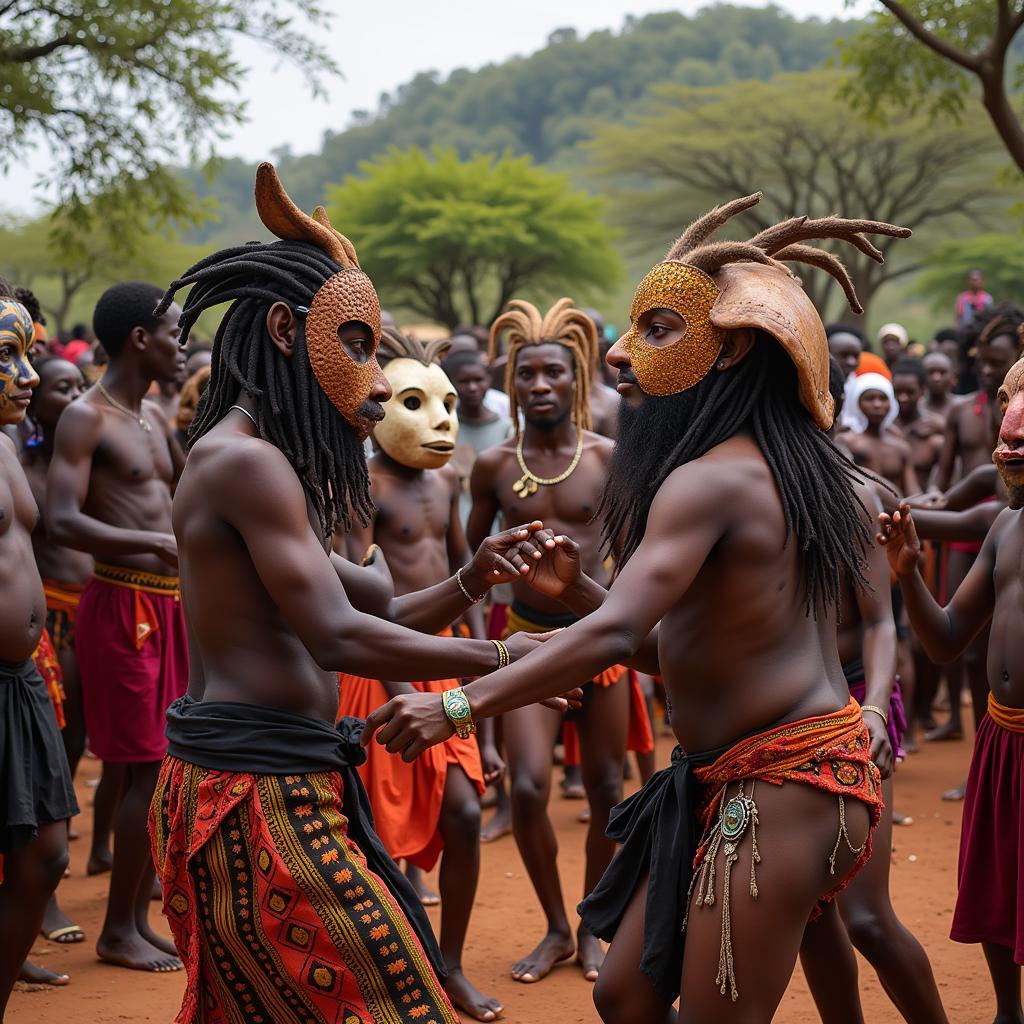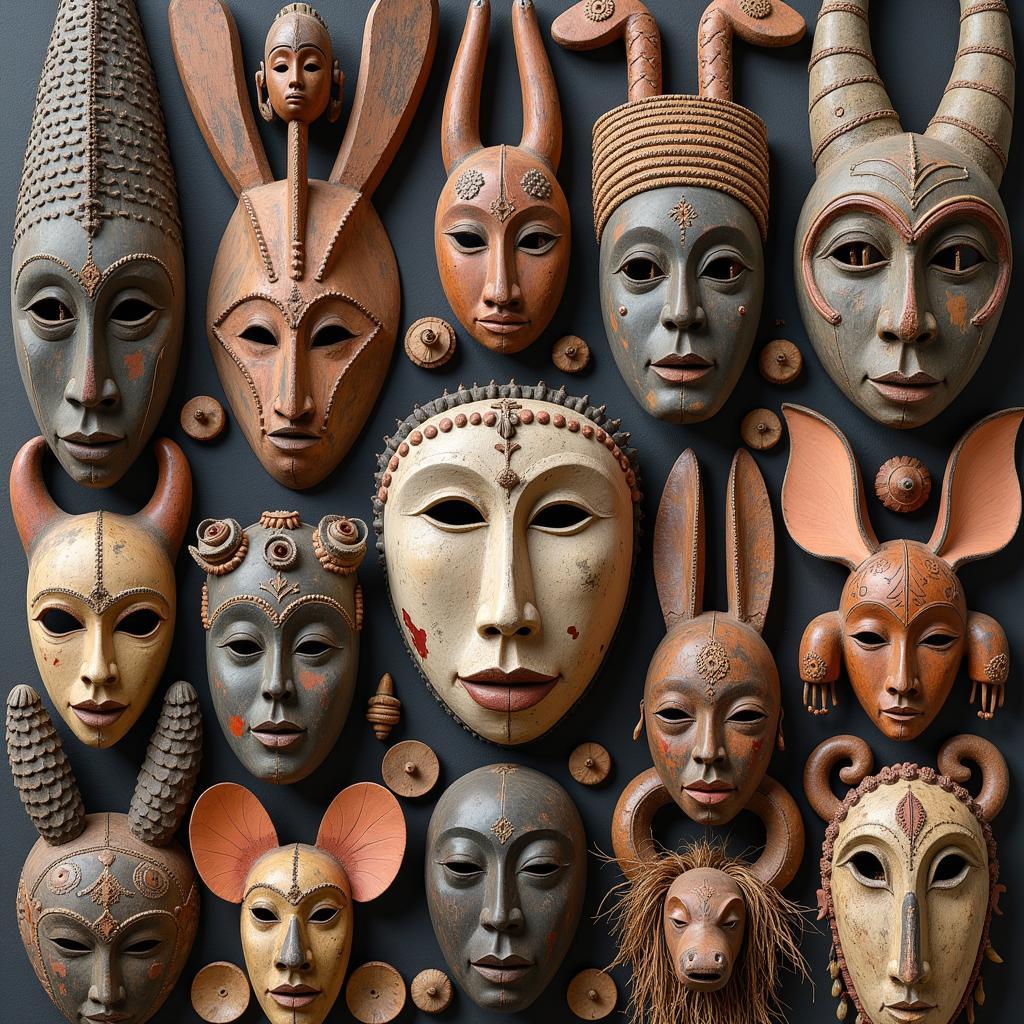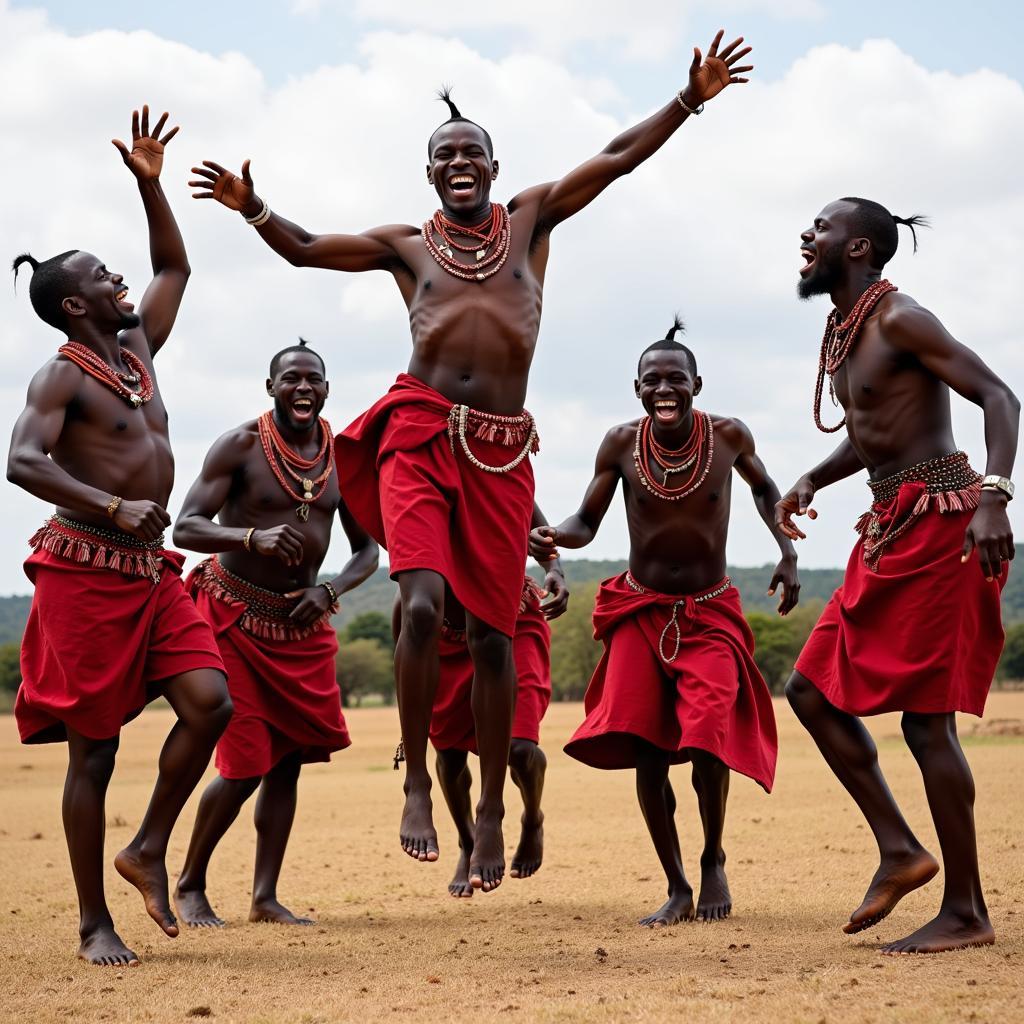Unveiling the Mysteries of African Tribal Masks
African Tribal Masks are more than just decorative objects; they are powerful symbols of cultural heritage, imbued with deep spiritual meaning and artistic expression. These intricate artifacts offer a fascinating glimpse into the diverse traditions, beliefs, and social structures of various African communities. They represent a tangible link to the ancestors, playing a crucial role in ceremonies, rituals, and storytelling. Let’s delve into the captivating world of African tribal masks and explore their significance.
From the vibrant colors and intricate carvings to the symbolic representations of animals and spirits, African masks embody the rich cultural tapestry of the continent. These masks are not merely static objects but dynamic participants in rituals and ceremonies, serving as conduits between the human and spiritual realms. Whether used in masquerades, dances, or initiation rites, they hold a potent power that transcends their physical form. Check out this captivating African adivasi dance.
The Significance of African Tribal Masks in Rituals
African tribal masks play a central role in a wide range of rituals and ceremonies, each with its own unique purpose and meaning. Masks are often used to invoke ancestral spirits, celebrate important events, maintain social order, and convey moral lessons. They can represent deities, animals, mythical creatures, or even abstract concepts. In some cultures, the wearer of the mask is believed to become the embodiment of the spirit it represents, acting as a bridge between the physical and spiritual worlds.
Masks are also used in initiation rites, marking the transition from childhood to adulthood. These masks often symbolize the challenges and responsibilities that come with maturity, preparing young people for their roles in society.
 African Mask Ritual Ceremony
African Mask Ritual Ceremony
The Art and Craftsmanship of African Masks
The creation of African tribal masks is a highly skilled craft, often passed down through generations within families or specific communities. The materials used vary depending on the region and cultural traditions, but commonly include wood, metal, leather, feathers, and beads. The carving process itself is often imbued with ritual significance, with specific prayers and offerings made to ensure the mask’s spiritual potency. Different styles and motifs are associated with specific ethnic groups and regions, reflecting the unique artistic sensibilities and beliefs of each community.
Materials and Techniques
The choice of materials for African tribal masks reflects the local environment and resources available. While wood is the most common material, masks can also be made from materials like copper, bronze, ivory, and terracotta. Techniques employed include carving, painting, and the addition of decorative elements such as feathers, beads, shells, and animal hides.
Would you like to try your hand at creating your own african mask drawing?
Exploring Different Types of African Tribal Masks
Across the vast continent of Africa, countless different types of tribal masks exist, each with its own distinct features and symbolism. From the iconic masks of the Dan people of Côte d’Ivoire, known for their elongated faces and serene expressions, to the vibrant masks of the Yoruba people of Nigeria, characterized by elaborate headdresses and intricate details, the diversity of African mask traditions is truly remarkable. Some masks depict human faces, while others represent animals, spirits, or abstract concepts. The specific design elements, such as horns, feathers, and geometric patterns, often carry specific meanings related to the mask’s intended purpose.
Imagine adorning your arm with an african armband tattoo inspired by these powerful symbols.
 Variety of African Mask Styles
Variety of African Mask Styles
Perhaps an african face piggy bank could be a unique way to appreciate this art form.
Preserving African Mask Traditions in the Modern World
In today’s rapidly changing world, preserving the cultural heritage of African tribal masks is of paramount importance. Museums and cultural institutions play a crucial role in documenting and safeguarding these artifacts, while also educating the public about their significance. Furthermore, supporting contemporary African artists who continue to create masks in traditional styles helps ensure that these art forms thrive for generations to come. By appreciating and understanding the rich history and symbolism embedded within African tribal masks, we can contribute to the preservation of a vital part of the world’s cultural heritage. An african continent wallpaper hd can be a constant reminder of this rich heritage.
Conclusion
African tribal masks are powerful symbols of cultural heritage, embodying the rich traditions, beliefs, and artistic expressions of diverse African communities. From their role in rituals and ceremonies to the intricate craftsmanship involved in their creation, these masks offer a fascinating window into the spiritual and social fabric of African societies. By understanding and appreciating the significance of African tribal masks, we can contribute to the preservation of a vital part of the world’s cultural heritage.
FAQ
-
What are African tribal masks made of?
African tribal masks are typically made of wood, but other materials like metal, leather, feathers, and beads can also be used. -
What is the significance of African masks?
African masks hold deep spiritual and cultural significance, representing ancestors, spirits, and playing a vital role in rituals and ceremonies. -
How are African masks made?
African masks are crafted using various techniques, including carving, painting, and the addition of decorative elements. The process is often passed down through generations. -
What do different African mask designs represent?
Different designs represent various concepts, including deities, animals, mythical creatures, and abstract ideas, reflecting the unique beliefs of each community. -
Where can I see African tribal masks?
You can see African tribal masks in museums, cultural institutions, and art galleries worldwide. You can also find them through reputable art dealers specializing in African art. -
Are African masks still made today?
Yes, contemporary African artists continue to create masks in traditional and modern styles, ensuring the continuation of this art form. -
How can I learn more about African masks?
You can learn more through books, online resources, and by visiting museums and cultural centers that specialize in African art.
Do you have other questions about African culture? Explore our articles on African dance, music, and art to further enrich your understanding of this vibrant continent.
Need more information about African tribal masks? Contact us at +255768904061, [email protected], or visit us at Mbarali DC Mawindi, Kangaga, Tanzania. Our 24/7 customer service team is ready to assist you.

